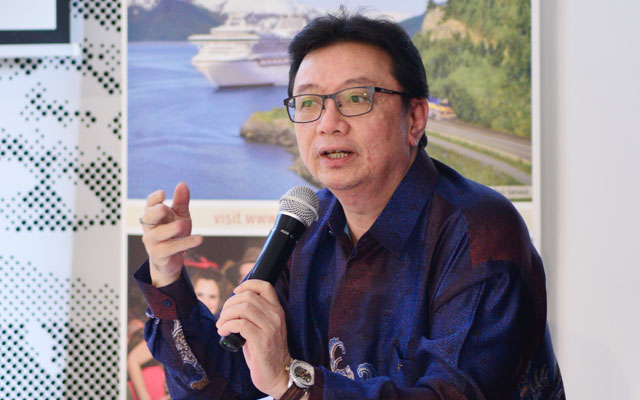Prices of cruise packages have dropped to the floor, removing one of the biggest misconceptions among Asian business events planners that events onboard are expensive, asserts Princess Cruises/Cunard Line’s South-east Asia director Farriek Tawfik during a Princess/TTGmice event on January 24.
Farriek said that due to increased capacity, Asian passengers could now enjoy cruising for half the price in 1994, when he started selling cruises.

The lead-in price for Alaska back in the 90s was around S$2,000 (US$1,531) per pax, excluding air, and today it’s S$1,000. Add to that the greater availability of air links and promotional rates in the market now, he pointed out.
As prices fall, cruising’s value-for-money proposition rises among Asian corporate event organisers and planners of business events. Princess recorded a whopping 40 per cent increase with this segment in 2016, and the same again last year, according to Farriek. It has just received a full charter booking for a seven-night incentive to Alaska for 3,000 pax, being organised from Asia although the company is international (name withheld), and the conference will be attended by worldwide participants.
Changing demographics is also helping turn the tide among planners to jump onboard.
“In those days, the demographics were usually wealthy retirees who would spend S$5,000 to S$10,000 by booking higher grades like balconies and mini suites, and take premium carriers and business-class seats. Today, the demographics have changed; we’re looking at younger sets that are economically and travel savvy in looking out for promotional rates and don’t mind the more affordable cabins like the ‘insides’ and ‘outside’ grades,” said Farriek.
“As cruise ships get bigger, lines have to work harder in filling them. Therefore, they usually throw up promotions, especially during the low season.”
That’s ideal for corporate clients, who do not need to meet and build teams during the high season, and for the ships, which desperately need to fill their cabins during off-peak.
Falling prices are also helping to bait planners to switch from domestic destinations to cruise ships. “In places such as Jakarta, for instance, we’re seeing that the big companies are realising that it often costs more to meet in a domestic location than to take a four-day all-inclusive package with us,” said Farriek.
Meanwhile, Farriek made a call to “develop cruising together” to the 100 corporate and business events planners who attended the event, saying this would have a positive effect on the broader Asian cruise market, and travel and tourism.
He referred to a large Indonesian incentive group that sailed with Princess as an example. Comprising grocery shop owners from the Surabaya countryside, the event opened “a whole new world for them” and many said they would come back to cruise on their own and with their families.
“If you don’t promote MICE onboard, you will lose out, as cruising really offers good value for money. So let’s develop the MICE cruise market together, and by doing so, you’ll also help the overall Asian cruise market to grow further,” he said.





















